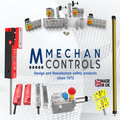
Posted to News on 25th Apr 2014, 11:33
Mechanical Design Engineering Handbook, book review
Jon Severn, the Editor of MachineBuilding.net, reviews Mechanical Design Engineering Handbook, 1st Edition, by Peter RN Childs.

The Mechanical Design Engineering Handbook, by Peter RN Childs, is a substantial volume that could be useful for a great many machine builders, mechanical engineers and students. Running to more than 800 pages, the handbook covers many areas of mechanical engineering.
In addition to the technical topics, the book has in-depth coverage of Design (including the design process, Total Design, Design for Six Sigma, and Design Optimisation), Specification and Ideation.
Technical topics covered in the handbook are as follows:
- Machine elements
- Journal bearings
- Rolling element bearings
- Shafts
- Gears
- Spur and helical gear stressing
- Bevel gears
- Worm gears
- Belt and chain drives
- Clutches and brakes
- Seals
- Springs
- Fastening and power screws
- Wire ropes
- Pneumatics and hydraulics
- Engineering tolerancing
Most chapters include worked examples, references, further reading and a glossary. Many also benefit from extensive detailed tabulated data; for example, there is a table of standard single row deep groove ball bearings that fills no fewer than 14 pages, and there are similar tables for single row cylindrical roller bearings and single row angular contact ball bearings. In addition, each chapter has a special link, such as this one at the start of the Rolling Element Bearings chapter: dx.doi.org/10.1016/B978-0-08-097759-1.00006-X. These links take readers to pages on the ScienceDirect website, where electronic versions of the individual chapters can be accessed. However, the URLs are difficult to type into a browser address bar compared with the user-friendly short URLs with which people are familiar today.
Of course, it would be impractical to include everything that might possibly be required by a mechanical design engineer, but a chapter on materials could be a useful addition to future editions of the book. Other areas that have not received coverage in the present edition are, for example: electric motors (despite the inclusion of hydraulic and pneumatic actuators); cams; ball screws; machined springs; hydromechanical shaft-hub connections; dampers; back-up rings for use with O-ring and Quad ring seals; and there is only minimal coverage of flexible shaft couplings. This may sound like nitpicking, but the stated aims of the book are to "present an overview of the design process and to introduce the technology and selection of a number of specific machine elements that are fundamental to a wide range of mechanical engineering design applications." Given the clarity and depth with which topics have been covered within the handbook, perhaps it is a victim of its own success in that it leads the reader to expect too much. As it stands, however, the Mechanical Design Engineering Handbook deserves warm praise for its thoroughness while addressing a broad range of mechanical engineering topics.
About the author, Peter RN Childs
Peter Childs BSc (Hons), DPhil, CEng, FIMechE is the Professorial Lead in Engineering Design at Imperial College London and Joint Course Director for the Innovation Design Engineering programme run in conjunction with the Royal College of Art, London. For 20 years he has been actively involved in industrial research and development, including projects for the Ford, Rolls-Royce, Siemens, Alstom, DaimlerChrysler and Volvo. He is a fellow of the Institution of Mechanical Engineers, and the American Society of Mechanical Engineers, and has won the American Society of Mechanical Engineers International Gas Turbine Institute John P Davies award for exceptional contribution to the literature of gas turbine technology.
Where to buy the Mechanical Design Engineering Handbook
The Mechanical Design Engineering Handbook is available directly from the publisher, Elsevier, as well as bookshops and online retailers. Both hard copies and digital downloads can be purchased.
Want the latest machine building news straight to your inbox? Become a MachineBuilding member for free today >>















